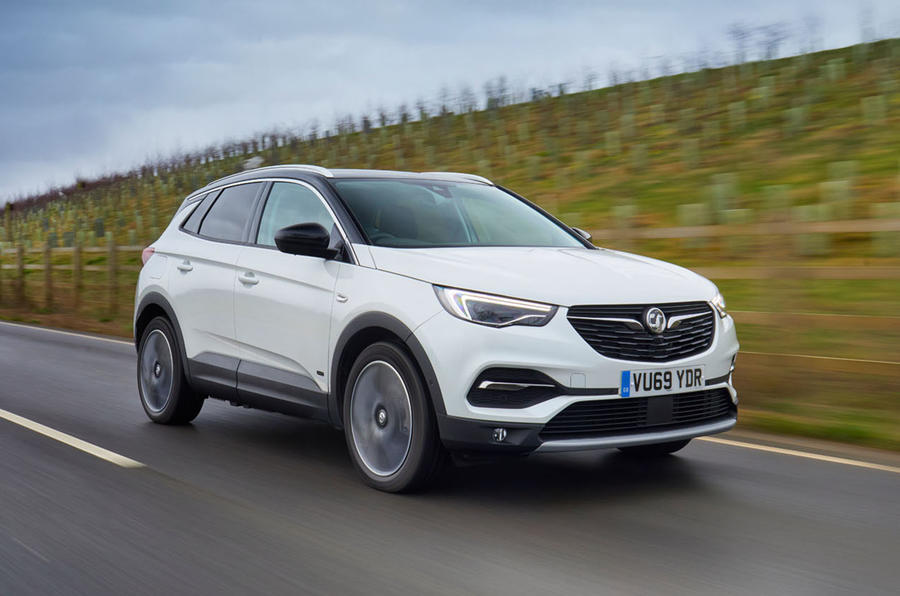The UK company car market is in the midst of a seismic shift.
The adoption of the latest WLTP emissions testing standard, combined with another tightening down of CO2-based UK company car tax rules, has really marginalised the suitability of conventional petrol- and diesel-powered cars for fleet use and shifted the spotlight squarely and unflinchingly onto the modern plug-in hybrid.
As many company car drivers will have already discovered to their cost, if you want to continue paying anything like the same benefit-in-kind (BIK) tax on a company car in 2020 as you did in 2019, the only way to do it – if you haven’t already – is to move out of a petrol or diesel car and into a PHEV.
These are the cars you should be considering for that big move. All are electrified hybrid options that’ll get you into the sub-50g/km CO2 money-saving BIK club, although, depending on their officially certified electric-only range, some currently qualify for a tax liability at 6% of their P11D price, some at 10% and others at 12%. Here’s how to choose wisely.
BMW’s competitors have followed its lead so many times when seeking success in the UK fleet market over the past few decades. It makes perfect sense, then, that BMW was the first premium brand to offer the market a really convincing plug-in hybrid executive option in the shape of the previous 330e, and that it should continue to lead the field with the current one.
The latest 330e combines a 2.0-litre turbocharged petrol engine with an electric drive motor mounted upstream of the gearbox, making it handle and behave much like any other G20-generation 3-Series. It imposes a relative penalty on boot space compared with its conventionally powered siblings, but it’s unlikely that typical business users will notice the shortage, and cabin space is unharmed.
With up to 288bhp of combined electric and petrol urge, the 330e has a fleet turn of pace and its powertrain feels particularly responsive as well as slick-shifting. The weight of that hybrid powertrain can be detected only slightly, and only really in its occasionally permissive high-speed vertical body control. Most of the time, the 330e just feels like an agile, entertaining, first-rate 3 Series in its sporting driver appeal.
The 330e has a WLTP-certified electric-only range of 37 miles, putting it in the mid-range 10% BIK tax bracket for PHEV options for the 2020-21 tax year.
Save money with new 3 Series deals from What Car?
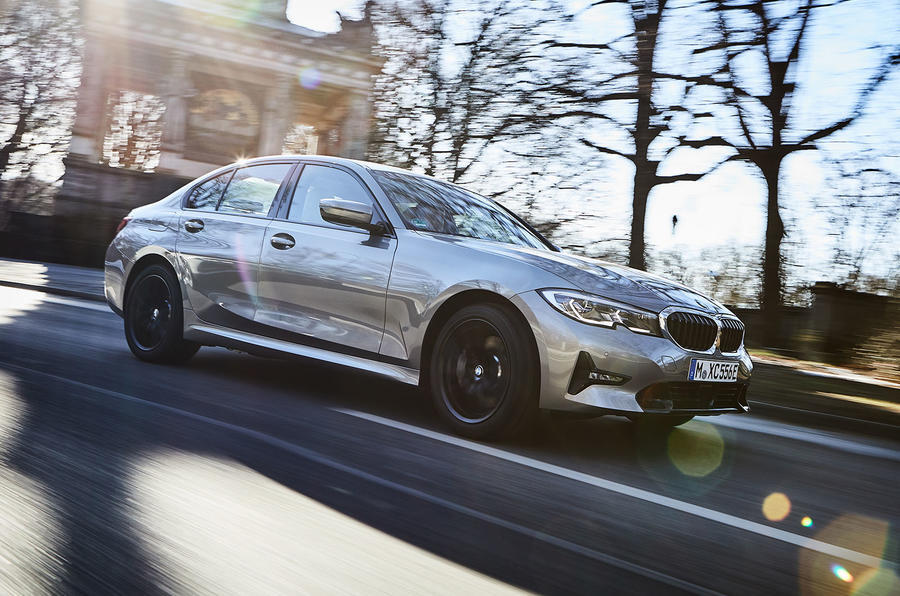
Skoda may have been busting a gut to change perceptions of its brand of late, but when the opportunity to bring some simple metal-for-the-money value to the plug-in hybrid market presented recently, it didn’t blink. It launched the new fleet-friendly Superb iV: a car that uses the engine and hybrid drivetrain with which drivers of the Volkswagen Passat GTE have become familiar in these past few years, but packages them in a bigger family car that's on offer at a lower list price. Simply clever, or just downright simple? Either way, it got our attention.
The Superb iV is surprisingly normal, considering it’s Skoda’s first plug-in hybrid. It doesn’t promise a particularly exciting driving experience, nor is it loaded with ritzy onboard technology or clothed in novel styling features in order to advertise its electrified credentials. It drives, ride and handles pretty much like any other Superb – which means it’s fairly softly sprung and comfort-oriented, and that it's easygoing rather than alert and energetic in its pedal responses.
The sheer size of any Superb ought to be a selling point for some, and the iV version is no different. Despite the fact that the battery eats into boot space a little, there’s still 485 litres available in the hatchback version and more still in the estate. Electric range is WLTP-rated at 35 miles for a 10% BIK tax rating.
If you’re looking for a roomy and cost-effective PHEV option that feels normal, rather than novel (read ‘a bit funny’), to drive, look no further.
Save money with new Superb deals from What Car?
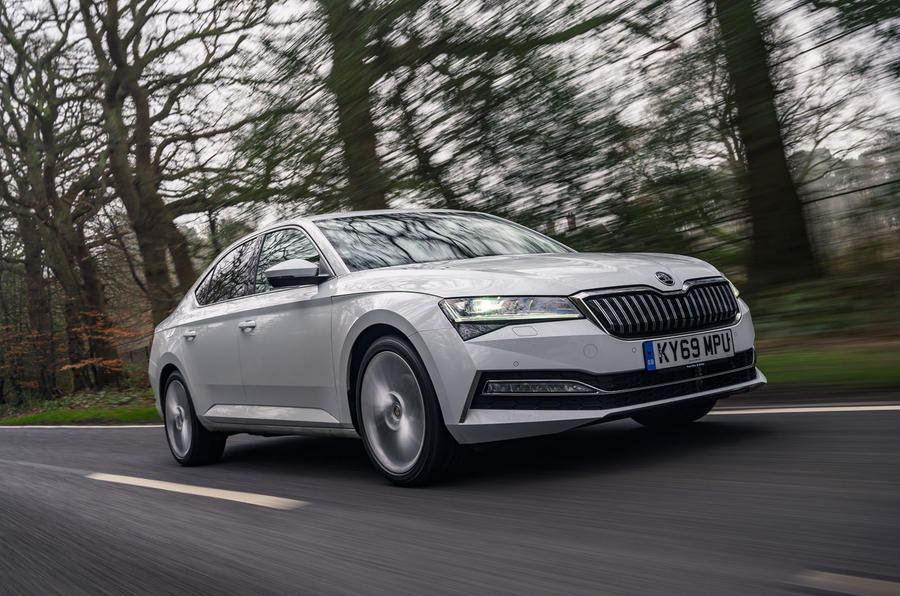
Volvo's history of offering its estate cars with a plug-in hybrid powertrain stretches back further than most in the business, but the recent V90 Recharge T6 is without doubt its most successful attempt at the recipe, and an outstanding all-rounder.
The car's modest 11.6kWh battery pack means some rivals go further on electric power alone, and with 335bhp all in, neither is this the most powerful PHEV Volvo has ever brought to market. But 36 miles of electric range and 335bhp means the V90 T6 offers usable zero-emission range and, when you need, more than enough performance. Any while the above Skoda is less expensive and every bit as spacious inside, it lacks Volvo's calling-card cabin atmos, which is among the most comfortable and relaxing around.
Another advantage the V90 T6 holds in the PHEv arena is that you can buy it with four-wheel drive, which isn't true to rivals from the premium German brands. Neither, for that matter, do Audi, BMW or Mercedes offer any of their full-size, saloon-based, petrol-flavoured PHEV models in estate form (though Mercedes will sell you a diesel-hybrid E-Class Estate).
Save money with new V90 deals from What Car?

The Hyundai Ioniq PHEV is one of this market’s better-established options. When, in October 2018, the UK government removed the £1500 tax incentive formerly applied to plug-in hybrids, the ones that best combined usability, real-world economy and value suddenly stood out. And this was, and remains, one of them.
Even now you’ll look long and hard for a plug-in hybrid available for less than £30,000 – and bargain-hunters really needn’t look beyond this one. At the time of writing, Hyundai was even offering finance incentives worth £2000 on the car, the likes of which you rarely see on in-demand electrified models.
The Ioniq PHEV offers usable cabin space for four adults, plenty of boot space and a viceless driving experience that, while neither particularly polished or exciting, won’t offend. It mixes combustion power with electric pretty seamlessly most of the time.
The car has an electric-only range of 32 miles on the WLTP cycle (putting it in the same BIK tax bracket as most of its opponents in this chart) and runs economically enough the rest of the time. Not with the frugality of the Toyota Prius or the performance of a Mini Countryman Cooper S E, admittedly, but well enough, and with competent ride and handling.
Save money with new Ioniq deals from What Car?
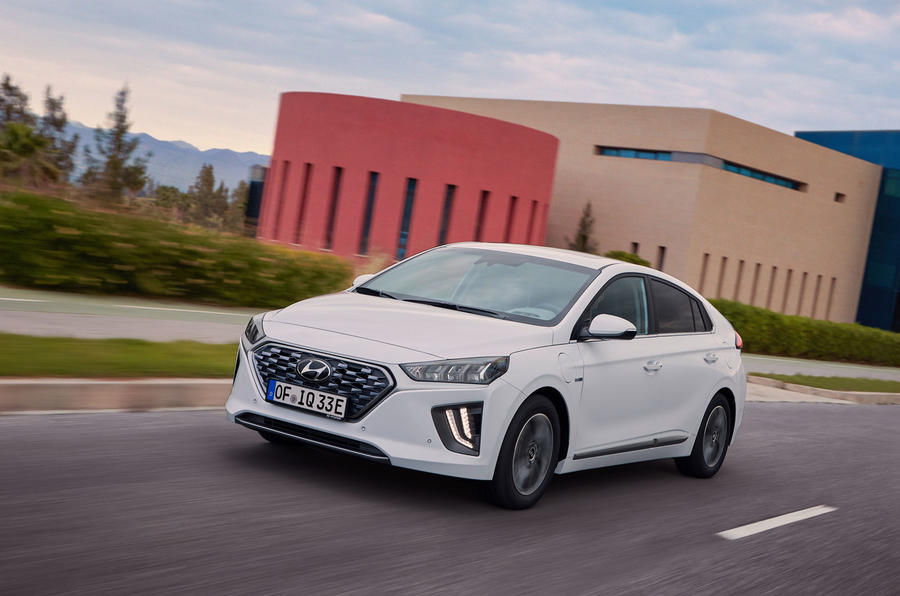
Mercedes is the only player in the PHEV segment offering the combination of a diesel engine and electric propulsion. In the E300de, it also allows you to choose a saloon or estate bodystyle, which is another advantage that isn’t as widely available as you might imagine. For those reasons and others, the E300de makes the top half of this chart.
Electric range only just scrapes a WLTP-certified 30 miles, although that will depend on optional specification, so the car may well miss a 10% BIK banding if you opt for bigger wheels or a sportier trim. The fact that it’s easy to add options and turn this into a £50,000-plus prospect will also have an impact on its tax efficiency, of course.
In the real world, our testing suggests that 22-25 miles is as far as the E300de will run without rousing its four-pot diesel engine. And yet considering it has only four cylinders, its performance is impressively swift. Clever power management makes it easy to capture and recycle energy without realising you’re doing it, and the handling is quietly deft and fairly precise for what is, after all, a two-tonne car.
Mercedes’ hybrid battery installation does take up some boot space, but it doesn’t prevent the E300de being a supremely practical car – particularly in estate form – as well as a smart, desirable and real-world-efficient one.
Save money with new E-Class deals from What Car?

That Audi’s first plug-in hybrids came with e-tron badges makes it a little bit confusing that the very latest don’t. Instead, Audi calls them TFSIe – and there are several headed to market throughout 2020.
The one that's already in showrooms is the petrol-electric Q5, the 55 TFSIe, which combines a 2.0-litre turbocharged petrol engine with an electric drive motor for a combined peak power output of 362bhp. Performance is predictably strong, but it's not as impressive as the general smoothness of this car’s powertrain in day-to-day operation, which reeks of the kind of attention-to-detail for which its maker is known.
The disappointments, beyond a high purchase price, are slightly disappointing real-world economy (think 35mpg on longer journeys); a slightly remote-feeling, carefully filtered and heavily assisted driving experience; and the fact that it doesn't have more than 30 miles of electric range so can’t get below a 12% BIK tax band.
Save money with new Q5 deals from What Car?
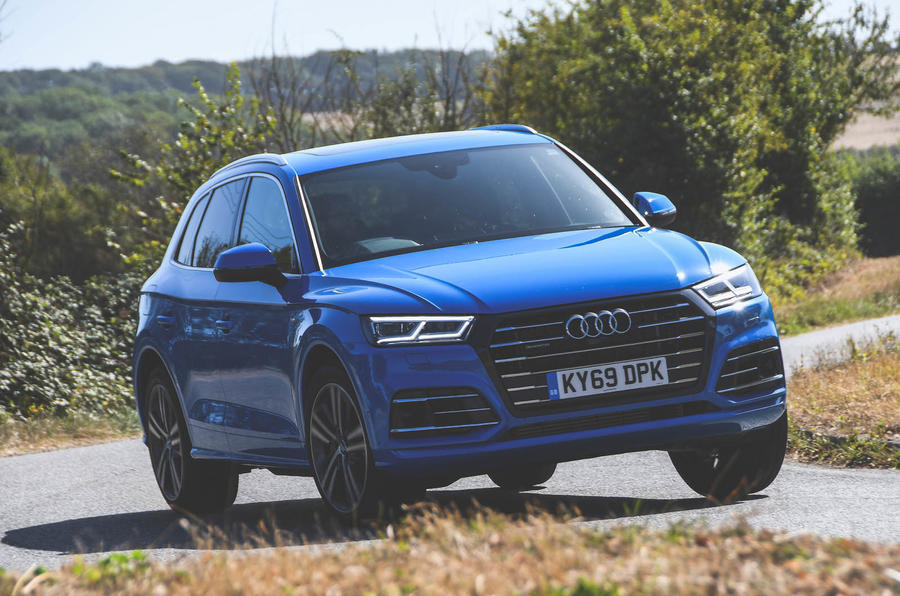
After a temporary suspension of sales, the Passat GTE returned to UK sales last year in updated form. The design came in for a nip and a tuck, but the biggest changes were made under the surface.
The battery pack was enlarged to 13kWh, increasing the car's electric range to as much as 36 miles on the WLTP cycle. The list price also fell, which will please the quarter or so of Passat buyers who will opt for the plug-in hybrid version. The powertrain itself consists of a reasonably refined turbocharged 1.4-litre petrol engine and an electric motor, with the two elements combining to deliver up to 215bhp to the front wheels through a six-speed dual-clutch automatic gearbox.
Admittedly, this isn't the quickest or the most exciting PHEV to drive by the segment’s latest standards but, in terms of breadth of appeal and understated Volkswagen-brand desirability, it has plenty to recommend it.
Save money with new Passat deals from What Car?
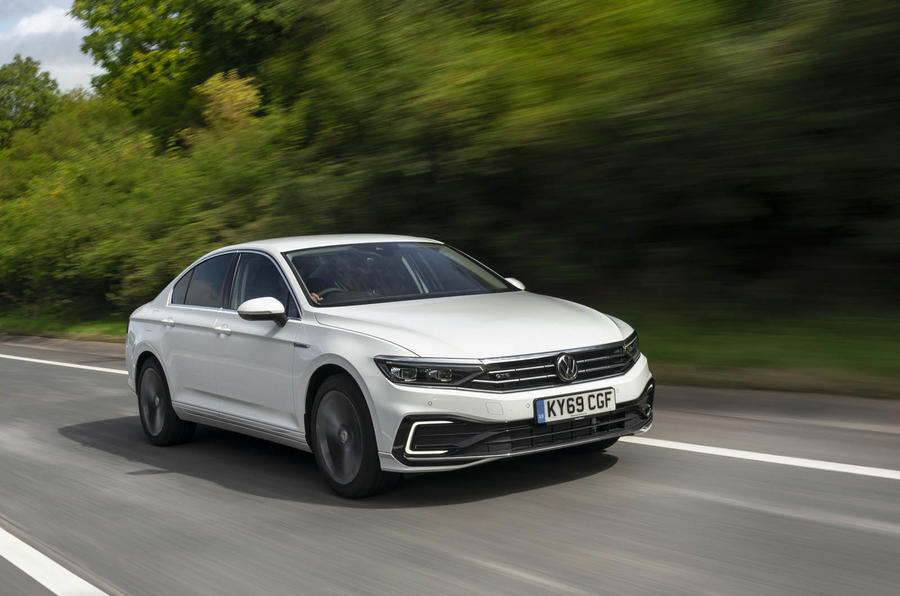
As the premium makers move to incorporate plug-in hybrid power into their line-ups, it was only a matter of time before the Mercedes A-Class sprouted a plug socket. This car combines a turbocharged 1.3-litre petrol engine with an electric motor for 215bhp in total. A 15.6kWh battery pack, which is large for any PHEV, gives the A250e an electric range of up to 42 miles on the WLTP cycle, allowing it to be the only car in this list qualifying for 6% BIK tax.
It's quite an impressive short-range electric car. The electric motor it uses feels quite powerful, punching fairly hard at town speeds and keeping it up out of town well enough to allow you to keep the pistons quiet pretty easily when you want to. There are lots of options for adjusting battery regeneration settings to your preference, too.
More's the pity, then, that the combustion engine is so noisy when it starts - and particularly when it revs - and in other respects this isn't a better-rounded, better-riding and more drivable car. It's efficient and fairly comfortable, but ride isolation isn't as good as it should be, and drivability suffers as a result of the car's unpredictable 'auto-regen' software which seeks to regulate the car's tendency either to coast or to harvest power automatically on a trailing throttle, but is seldom easy to predict.
Save money with new A-Class deals from What Car?
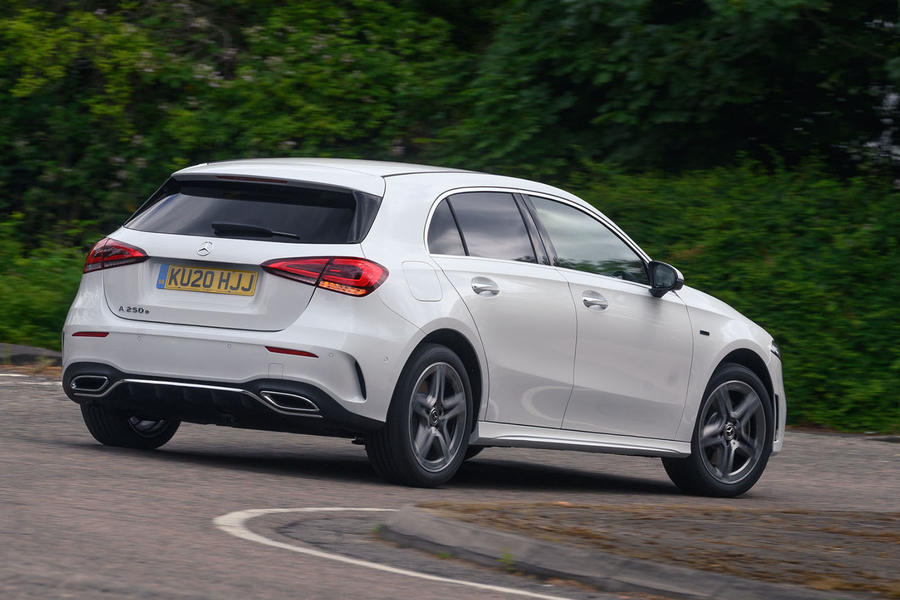
Volvo was one of the first premium brands to move into the plug-in hybrid field, but it has waited to get involved with a car priced to appeal in a big way to fleet operators. With the XC40 Recharge T5, however, it has crossed that threshold: this is a compact SUV with only a three-cylinder petrol engine and yet it has combined system outputs of 259bhp and 314lb ft, plus a starting price of only just above £40,000.
Like the Audi Q5, the XC40 narrowly misses passing the 30-mile mark for electric range and so isn’t as cheap on BIK tax as other options here. Its driving experience also leaves a little bit to be desired, delivering neither the authoritative turn of speed to make you sit up and pay attention nor the slick refinement and polish to ease your passage. Rolling refinement is only okay, with an edge of firmess and brittleness afflicting sport-suspended R-Design-spec cars in particular.
Save money with new XC40 deals from What Car?
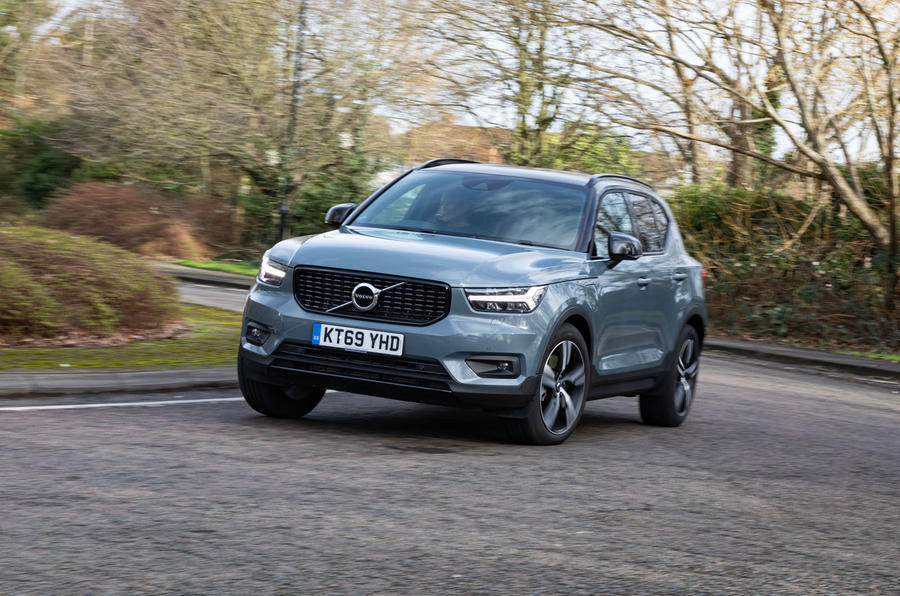
The PSA-Peugeot-Citroen group is now entering the plug-in hybrid market. This petrol-electric Peugeot, available as a saloon or SW estate, is one of several PHEV efforts from sister brands Peugeot, Citroen, Vauxhall and DS all of which are hitting the market at roughly the same time. And all of them are powered in much the same way: a 1.6-litre turbocharged petrol motor sits up front & drives the front wheels with some electric motor assistance - and, in some cases although not in this particular one, a second electric motor sits between the rear wheels and makes for four-wheel drive and an extra slice of performance.
We marginally prefer the simpler, cheaper and more modest combination of one engine and one electric motor. In the 508 Hybrid it makes for decent pace and drivability, as well 31 miles of WLTP range for a 10 per cent BIK tax rating. The powertrain is at its best when you're mooching around in no particular hurry. The combustion engine starts and stops very unobtrusively, and part-throttle drivability is good. Dig deeper, for a quicker turn of speed, and the powertrain's slickness deteriorates a little, but outright acceleration is respectable enough, while selecting gears for yourself using the car's paddles helps calm down the occasionally hyperactive temperament of the hybrid system.
The car's interior is less roomy than some mid-sized saloons, but the back seats are usable enough for the kids, while the front is pleasant and visually interesting environment. That, combined with the car's stylishness, ought to take this particular 508 a reasonably long way.
Save money with new 508 deals from What Car?
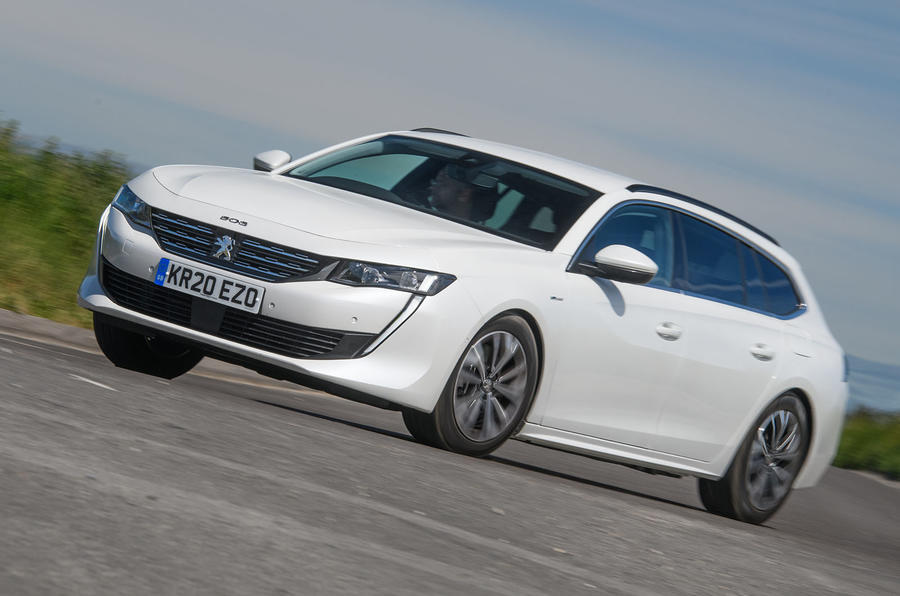
Vauxhall is looking to become something of a mover and a shaker in the new-age plug-in hybrid fleet market, just as it was in the company car scene 20 years ago when the Vectra was in its pomp. The car it’s looking to for success isn’t anything like a traditional family saloon, however – rather its first petrol-electric SUV, the Grandland X Hybrid4.
Sharing its platform and its all-paw powertrain with a number of new Peugeot and DS models, the Grandland X certainly has the stats to catch your eye. Between its turbocharged 1.6-litre petrol engine and twin electric drive motors, it produces 296bhp and 383lb ft, and can accelerate to 60mph from rest in less than 6.0sec.
That’s quite of a lot of performance on offer in a car that, thanks to the new tax rules, might cost a company car driver a similar monthly BIK outlay as they were previously paying for a mid-range diesel Qashqai. It's a shame, then, that this Vauxhall's driving experience struggles to deliver against such a top billing. It's quick in outright terms but can be unresponsive and clunky when switching between power sources, while it's a little short on handling finesse and engine-on mechanical refinement.
Unlike the Q5 and the XC40, the Grandland X does beat 30 miles of electric range (although not out on the road, in our test experience) and so qualifies for 10% BIK tax.
Save money with new Grandland X deals from What Car?
